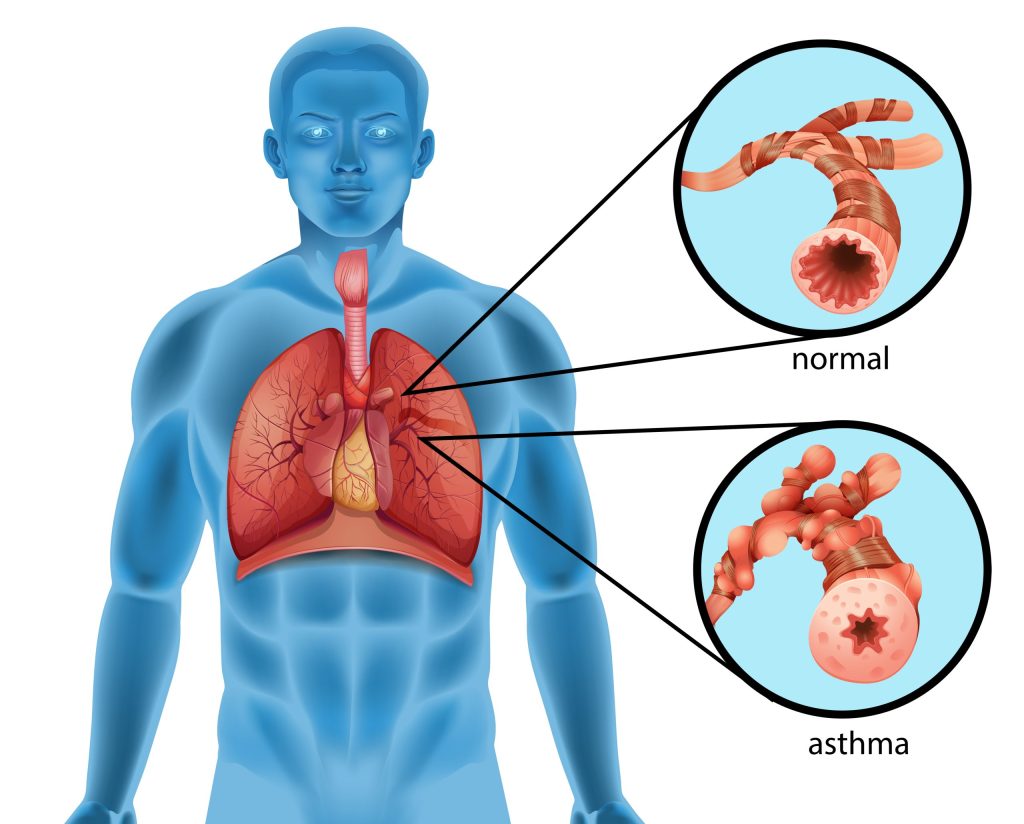Manage asthma before it kills you.

Table of Contents
Life is what we get only once. But if we face some diseases which becomes part and parcel of our life, then we need to find a perfect solution. Asthma is such a disease which may leave the patient in great difficulty of life. But, always running here and there for steroids and bronchodilators in emergency, one must try to find a better substitute. let’s understand this disease in a better way.
Asthma is a chronic respiratory disease characterized by inflammation and narrowing of the respiratory tract, causing difficulty breathing. This disease affects millions of people worldwide and can significantly affect their quality of life. Understanding the causes, aggravating factors, and available treatments is essential to effectively treating this condition.
Causes:
It is a complex disease influenced by many factors, including genetics, environmental factors, and immune system response. Some common reasons are:
Genetic factors:
People with a family history of asthma are more likely to develop the disease. Its development is facilitated by specific genes associated with the immune response and airway inflammation.
Environmental factors.
Exposure to allergens such as pollen, dust mites, pet dander, and mold can trigger asthma symptoms. Air pollution, tobacco smoke, respiratory infections, and occupational hazards are also known environmental causes.
Allergic sensitization.
Allergic asthma develops as a result of the body’s immune response to allergens. Sensitization to allergens causes the release of inflammatory substances that cause swelling and narrowing of the airways.
Lung infection.
Viral respiratory tract infections, especially in early childhood, can increase the risk of developing asthma. Infections such as the common cold and respiratory syncytial virus (RSV) can make asthma symptoms worse.
Aggravating factors
Many factors can worsen the symptoms or trigger an asthma attack:
Allergens.
Exposure to allergens such as pollen, dust, and pet dander can worsen the symptoms. Allergens worsen the disease by triggering an immune response in the airways that causes inflammation, bronchospasm, and increased mucus production. When exposed individuals are exposed to allergens such as pollen, dust, animal dander, or mold, they develop an allergic reaction characterized by inflammation of the airway walls and the recruitment of inflammatory proteins. This inflammatory movement narrows the airways, making breathing difficult and increasing symptoms such as wheezing, shortness of breath, coughing, and chest tightness.
Pollution.
High levels of air pollution, including particulate matter and ozone, can irritate the airways and trigger attacks.
Exposure to smoke.
Active or passive smoking can worsen the symptoms and increase the risk of developing asthma, especially in children.
Cold wind.
Inhaling cold air can cause the airways to narrow, which can cause breathing difficulties in those with asthma.
Work.
Physical activity can trigger its symptoms in some people, a condition known as exercise-induced bronchospasm.
Emotional stress.
Stress and strong emotions can worsen the symptoms by triggering physiological responses that affect breathing.
Treatment strategy
Allopathic medicine:
1. Bronchodilators. These medications help relax the muscles in the airways, making it easier to breathe during an asthma attack. Short-acting bronchodilators provide quick relief, while long-acting bronchodilators help in the long-term treatment of symptoms.
2. Inhaled corticosteroids. These anti-inflammatory drugs reduce inflammation in the airways and help prevent the symptoms. Usually used as maintenance therapy for long-term asthma control.
3. Oral corticosteroids. For severe exacerbations, oral corticosteroids may be prescribed to reduce inflammation and improve lung function.
4. Leukotriene modifiers. This medicine blocks the effects of leukotrienes that cause inflammation and narrowing of the airways.
Ayurvedic medicine:
1. Ayurvedic herbs. Herbs like Vasaka (Adhatoda vasica), Tulsi (Ocimum Sanctum) and Yashtimadhu (Glycyrrhiza) have anti-inflammatory and bronchodilator properties, which help relieve the symptoms.
2. Panchakarma Therapy. Panchakarma, an Ayurvedic detoxification process, can help remove toxins from the body and improve respiratory function in those who are already having the disease.
3. Pranayama and yoga. Breathing exercises (pranayama) and yoga postures can strengthen the respiratory muscles, increase lung capacity and reduce stress, making them beneficial.
4. Diet and lifestyle changes. Ayurveda emphasizes the importance of a balanced diet and a healthy lifestyle to maintain overall well-being.
Avoiding triggers, maintaining a clean environment, and practicing relaxation techniques are important component.

